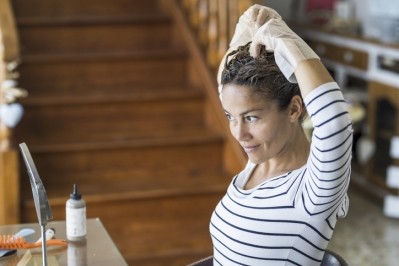SCCS publishes final opinion on dihydroxyacetone safety

The final opinion on use of DHA (chemical name 1,3-Dihydroxy-2-propanone) – as a leave-on hair colouring ingredient and in self-tanning creams – was published on Monday 9, 2020 by the European Commission, following the SCCS’s plenary meeting on March 3-4.
DHA safe at specific concentrations
The SCCS acknowledged that DHA was not currently regulated under the Cosmetics Regulation (EC) No. 1223/2009 but said, in considering scientific data including exposure assessment and toxicological evaluation, was safe to use as a hair colouring ingredient in leave-on, non-oxidative applications at a maximum concentration of 6.25%.
Use of DHA as an ingredient in self-tanning lotions and creams, it said, was also considered safe to use but at a maximum concentration of 10%.
The final opinion followed recommendations outlined in SCCS’s preliminary opinion, adopted on 30-31 October 2019 with the comment period closing January 20, this year.
Hair colouring – preliminary opinion on Indigofera tinctorial
The SCCS still had its preliminary opinion on the safe use of Indigofera tinctorial (C170) open for comment until March 13, 2020, looking at it as an ingredient in non-oxidative conditioning hair colouring products.
The preliminary opinion on C170 suggested the ingredient was safe to use in on-head colouring products at concentrations of up to 25%. However, the SCCS noted that a weak skin sensitisation potential “cannot be excluded”.
Final opinions to come on aluminium and zinc pyrithione (ZPT)
Final opinions on the safe use of aluminium in antiperspirants and cosmetics and zinc pyrithione (ZPT) for anti-dandruff hair products were also due soon. The comment period for preliminary opinions on each closed February 17 and February 24, respectively.
The SCCS’s second preliminary opinion on use of aluminium suggested safe use at maximum concentrations of 6.25% in non-spray antiperspirants; 10.6% in spray antiperspirants; 2.65% in toothpaste; and 0.77% in lipstick.
The SCCS’s preliminary opinion on use of ZPT suggested safe use in rinse-off, anti-dandruff hair products at a maximum concentration of 1%.










![Chinese study highlights mental health challenges in atopic dermatitis, emphasising holistic patient care. [Getty Images]](https://www.cosmeticsdesign-europe.com/var/wrbm_gb_food_pharma/storage/images/_aliases/wrbm_tiny/publications/cosmetics/cosmeticsdesign-asia.com/headlines/formulation-science/chinese-research-linking-atopic-dermatitis-to-mental-health-underscores-need-for-holistic-care/17040623-1-eng-GB/Chinese-research-linking-atopic-dermatitis-to-mental-health-underscores-need-for-holistic-care.jpg)








